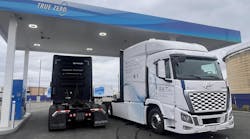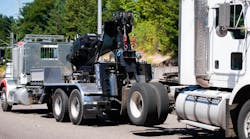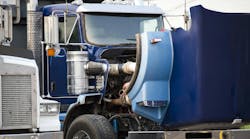Preparing for 2002 and beyond Upcoming changes in engine emissions restrictions will make the dirty job of oil filters even dirtier. Literally. The more stringent emissions requirements on the books for 2002 and 2006 mean that engines will be generating more soot, much of which will end up in the crankcase. That means the oil filter will have to work harder than ever.
Although no one knows with 100% certainty what changes engine makers will settle on to meet EPA regulations, there seems to be a general consensus as to how changes to the engines will change conditions in which oil filters have to work.
For starters, engine temperature will likely rise, and with it the temperature of the oil. As Donaldson points out, filter makers will have to look at whether filter media, as well as gaskets and seals, can stand up to these higher temperatures
In addition, oil is likely to be more acidic. Fleetguard Nelson says that since 2002-era oils will have to handle a higher concentration of soot, more aggressive additive packages may be needed, creating potential problems for filter media and seals. This is not an insignificant problem since a broken inner seal could send a chunk of contaminant downstream; a cracked outer seal could result in an oil leak.
According to Donaldson, increased levels of acidity are much more likely to create a problem for cellulose filter media than for synthetic media. Donaldson believes that for 2002, fleets that want to continue using cellulose filters will probably have to shorten their drain intervals. Filters that can now retain their ability to catch contaminants may not function as well in terms of capacity and durability in a sootier, more acidic environment.
Since the demands placed on filters will be greater, improvements in technology may buy filter makers more efficiency, but not necessarily more time. If fleets want to maintain drain intervals, Amsoil says a switch to synthetic filters may be their best option.
Many filter makers feel their extended-service filters will be able to handle the 2002 engine environment. As Baldwin points out, however, the stricter requirements for 2006 are another story altogether. Fram says that new media technology will help mitigate the effect of stricter emissions requirements.
Fleetguard suggests that a centrifugal filter, which it says is especially efficient at filtering out the smallest particles, in combination with a full-flow unit may be the best approach to managing higher soot levels. Others, such as Amsoil, Fram and Donaldson, feel that some type of bypass filtration may also be needed to accommodate increased soot removal.
Many filter makers offer premium extended service products that provide better restriction, efficiency and capacity than conventional units. Fram recently introduced its Heavy Duty J-Seam oil filter, featuring an improved media that improves capacity without sacrificing efficiency, as well as a stronger filter-to-engine seal.
Donaldson offers the Endurance line, which uses an advanced synthetic media called Synteq. Fleetguard Nelson's premium product is the ES System Venturi Combo, a combination-media, full-flow filter. The unit's StrataPore pleated media section filters out the larger particles from wear metals and dirt, while the stacked disc section, which uses depth filtration, removes the smaller soot and sludge particles.
The Severe Service line from Baldwin blends cellulose and synthetic media for the added efficiency and capacity that extended service requires. Wix offers HE (high-efficiency) versions for some of its most popular heavy-duty and off-road filters. More robust in design, media for these units are either straight fiberglass or a combination of high-efficiency fiberglass, cellulose and synthetic material. Amsoil's premium line is the Amsoil SDF, full-flow filters that use a combination of cellulose and synthetic fibers.
Meanwhile, the trend toward really extended drain intervals (40,000-60,000 mi.) is slowing somewhat because many fleets have realized they took intervals out too far without proper oil analysis. Wix points out that since engines differ in terms of wear rates, oil analysis is the only safe way to extend drain intervals.


